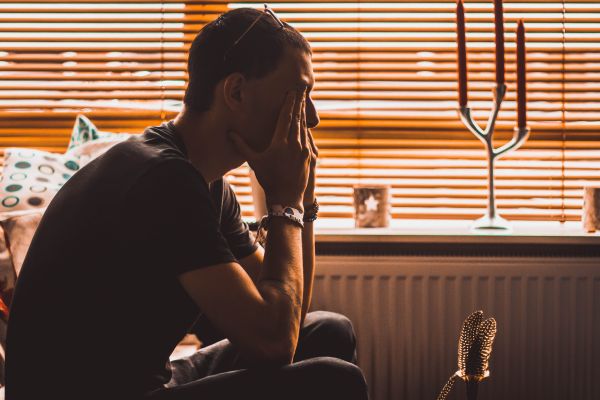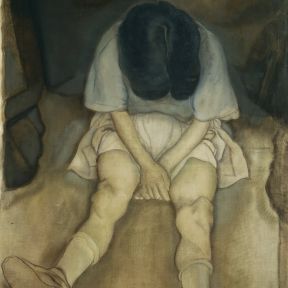
Learned Helplessness
Learned helplessness occurs when an individual continuously faces a negative, uncontrollable situation and stops trying to change their circumstances, even when they have the ability to do so. For example, a smoker may repeatedly try and fail to quit. He may grow frustrated and come to believe that nothing he does will help, and therefore he stops trying altogether. The perception that one cannot control the situation essentially elicits a passive response to the harm that is occurring.

The term was coined in 1967 by the American psychologists Martin Seligman and Steven Maier. The pair were conducting research on animal behavior that involved delivering electric shocks to dogs. Dogs who learned that they couldn’t escape the shock stopped trying in subsequent experiments, even when it became possible to avoid the shock by jumping over a barrier. The researchers later realized they had picked up on a slightly different behavior, learning control, but studies have since confirmed that learned helplessness occurs.
Seligman later developed the concept of learned optimism: By explaining events to ourselves in a constructive manner and developing a positive internal dialogue, people can break free from their cycle of helplessness.
Seligman subjected study participants to loud, unpleasant noises, using a lever that would or would not stop the sounds. The group whose lever wouldn’t stop the sound in the first round stopped trying to silence the noise subsequently. Not trying leads to apathy and powerlessness, and this can lead to all-or-nothing thinking. Nothing I do matters. I always lose. This phenomenon exists in many animal species as well as in humans.
The concept may also manifest in educational settings when children feel they cannot perform well and therefore stop trying to improve. The experience is characterized by three main features: a passive response to trauma, not believing that trauma can be controlled, and stress. When parents do everything for their kids, helplessness can follow. Kids do not learn to take care of themselves, and they lose personal agency. A good example of helplessness: When parents do their children’s chores for them.
The well-known term Failure to Launch is a reality for many parents. The adult child is not interested in college, unable to land gainful employment, and appears to be in a state of inertia. He is fully dependent on his parents. Some researchers use the term adult entitled dependence or AED to describe this phenomenon. The adult child may suffer problems such as anxiety and depression. And in some cases, the adult child blames the parent(s) for his dysfunction.
They can be. Perhaps, as children, their parents did everything for them, and they happily carry this helplessness into adulthood. They expect others to do everything for them. The self-absorbed never did their chores and enjoyed adulation and praise in their younger years. Why should they put in the effort now?
Sometimes victimhood can feel like a never-ending state. This person never feels in control of their life, and this loss of control is compounded as time goes on. They are powerless, and they engage in negative self-talk, putting the self down, and having no self-worth. Being helpless can get the victim what they need, namely sympathy and attention.
People who suffer from addiction often feel a certain helplessness. They are powerless and overwhelmed by the pull of their substance of choice, and their helplessness fuels this cycle. In fact, engaging in the addiction may ameliorate the sufferer's feeling of helplessness, and diffuse the feeling of powerlessness. Perhaps the addiction sets aside anxiety or depression or anger.
In the real world, learned helplessness can emerge from and contribute to depression, anxiety, and post-traumatic stress disorder. During a depressive episode, for instance, someone may believe that nothing will end their suffering, so they stop seeking help completely. When a person experiences high self-efficacy and independence, they also enjoy better health outcomes.

Learned helplessness typically manifests as a lack of self-esteem, low motivation, a lack of persistence, the conviction of being inept, and ultimately failure. It is more common for people who have experienced repeated traumatic events such as childhood neglect and abuse or domestic violence.
When we're helpless, we have no control over our lives; our actions are futile. Nothing will change, so why bother? In this mindset, change seems unfeasible. However, it is always possible to take action; we just have to be open to the possibilities.
People who feel stuck in a relationship sometimes give up. They are unable to improve or work on their relationship and they are also unable to end it. Sometimes, a partner can feel that they invested a lot in the union, and moving on does not feel right. Yet fixing the problems seems just as daunting. Instead, they slide into a state of helplessness: What is the point in trying?
People can push back against learned helplessness by practicing independence from a young age and by cultivating resilience, self-worth, and self-compassion. Engaging in activities that restore self-control can also be valuable. For example, an elderly person who feels helpless in the aging process can engage in small exercises that they know will restore a sense of control.
Your brain wants to deal with failure by giving up. Yet therapy, especially cognitive behavioral therapy, can be helpful for exploring the origins of perceived helplessness and addressing related behaviors. Working with a therapist may help you unlearn and "decondition" yourself. A clinician may help you to change your thinking style from pessimism to optimism, and you can do this perhaps by reframing situations and outcomes in a more positive light.














